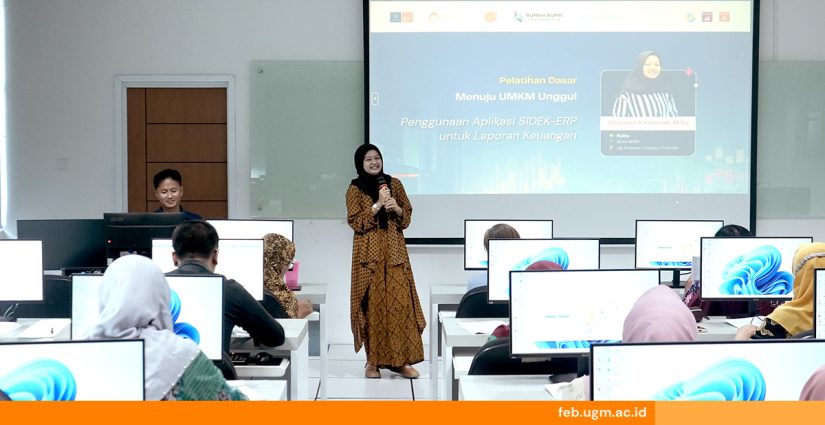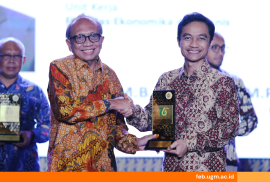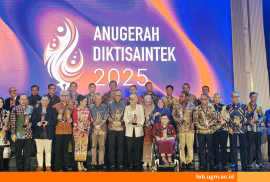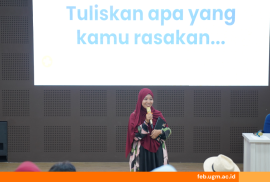
Accurate financial recording is a crucial foundation for healthy business management. This principle played a key role in the Basic Training for Excellent MSMEs, which featured a session titled Using the SIDEK-ERP Application for Basic Financial Reporting on Wednesday (16/7).
The Entrepreneurship, Innovation, and MSME Studies Division of the Faculty of Economics and Business at Universitas Gadjah Mada (FEB UGM) organized the training in collaboration with the Center for Information Systems Studies (PKSI) at FEB UGM and Rumah BUMN. Dozens of MSME players from Yogyakarta and Central Java attended. In this session, Uswatun Khasanah, M.Sc., a research assistant at PKSI FEB UGM, guided participants in understanding accounting and using the SIDEK-ERP application to prepare financial reports.
At the beginning of the session, Uswatun emphasized the importance of basic accounting knowledge, which starts from identifying economic transactions, recording and classifying them, and communicating the results through financial reports to relevant stakeholders.
“Data recording occurs in everyday life, for instance, when purchasing a computer, negotiating with clients, or paying rent. “Accounting information serves internal parties, such as the finance, marketing, human resources, and management departments, as well as external parties, including investors, creditors, and the government,” she explained.
Uswatun also introduced the fundamental accounting principles using the concept of debits and credits, which must always remain balanced, covering the elements of assets, liabilities, equity, income, and expenses. Participants learned about the fundamental accounting equation: debits include assets and costs, while credits comprise liabilities, equity, and revenue.
Furthermore, participants comprehensively understood how to collect financial data for MSMEs. Uswatun explained that assets fall into two categories: current and non-current.
“Current assets include cash balances held in banks, e-wallets, or on hand, as well as accounts receivable, business supplies, and inventory. Meanwhile, non-current assets cover land and buildings, operational vehicles, and other business equipment,” she added.
Regarding liabilities, participants learned about current and non-current liabilities. Current liabilities include trade payables, accrued expenses, and tax payables. Non-current liabilities are long-term debts that extend beyond one year. Participants learned about business ownership types for the equity component, which influence how equity is structured, how to identify its components, and how to present it as retained earnings or capital.
In addition to the presentations, a key highlight of the training was the introduction and hands-on practice with the SIDEK-ERP application, a digital platform developed by PKSI FEB UGM to help MSME players systematically record and manage their financial data. SIDEK-ERP is a web-based application offering features that simplify business management, operational control, and financial management. This application facilitates financial data analysis, minimizes the risk of recording errors, and streamlines bookkeeping.
Reporter: Shofi Hawa Anjani
Editor: Kurnia Ekaptiningrum
Sustainable Development Goals












